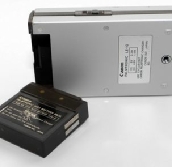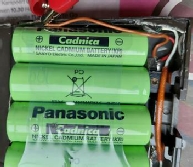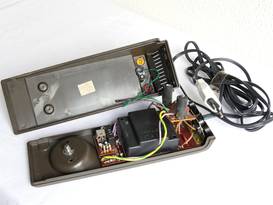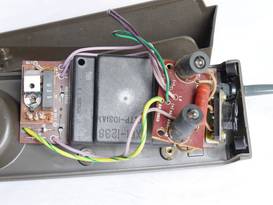






Click to view a full size picture (opens in a new tab)


The original NiCd cells had to be replaced. They are contained in a plastic unit which easily slides out of the calculator housing. If one side is carefully loosened, the cells become visible for replacement. The photo shows how that side is currently kept on its place with some Scotch tape.
I used 600 mAh low self-discharge NiMh AA cells.
Charging seemed to go pretty well, however the batteries held charge less than a few weeks.
So I decided to measure the charging process, i.e. charging current and cell voltage over a period of several hours. It then appeared that the NiMh cells weren’t charged much more than about 100 mAh in 45 minutes. Charging then more or less stopped.
Looking for information regarding charging NiMh and NiCd cells I found a publication (*) which made me decide to change the batteries for 700 mAh NiCd cells. Measuring the charging process again, I saw a very different charging pattern (voltage increase over time).
It now charges an empty pack with about 500 mAh in 4 hours. We’ll see how it holds charge now.
(*) Apparently chargers use small differences in cell charging characteristics to determine at which point in time a cell is fully charged. These characteristics are not identical for NiCd and NiMh. The Canon LE-10 charger appears to be designed to properly handle NiCd.





| Mechanical Calculators |
| Electronic Calculators |
| Typewriters |